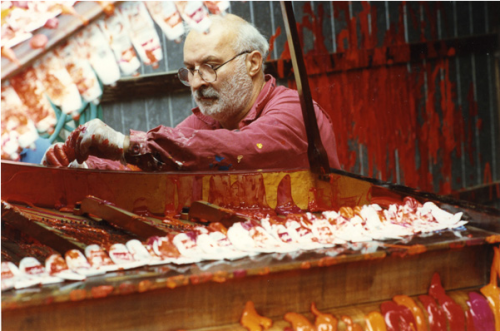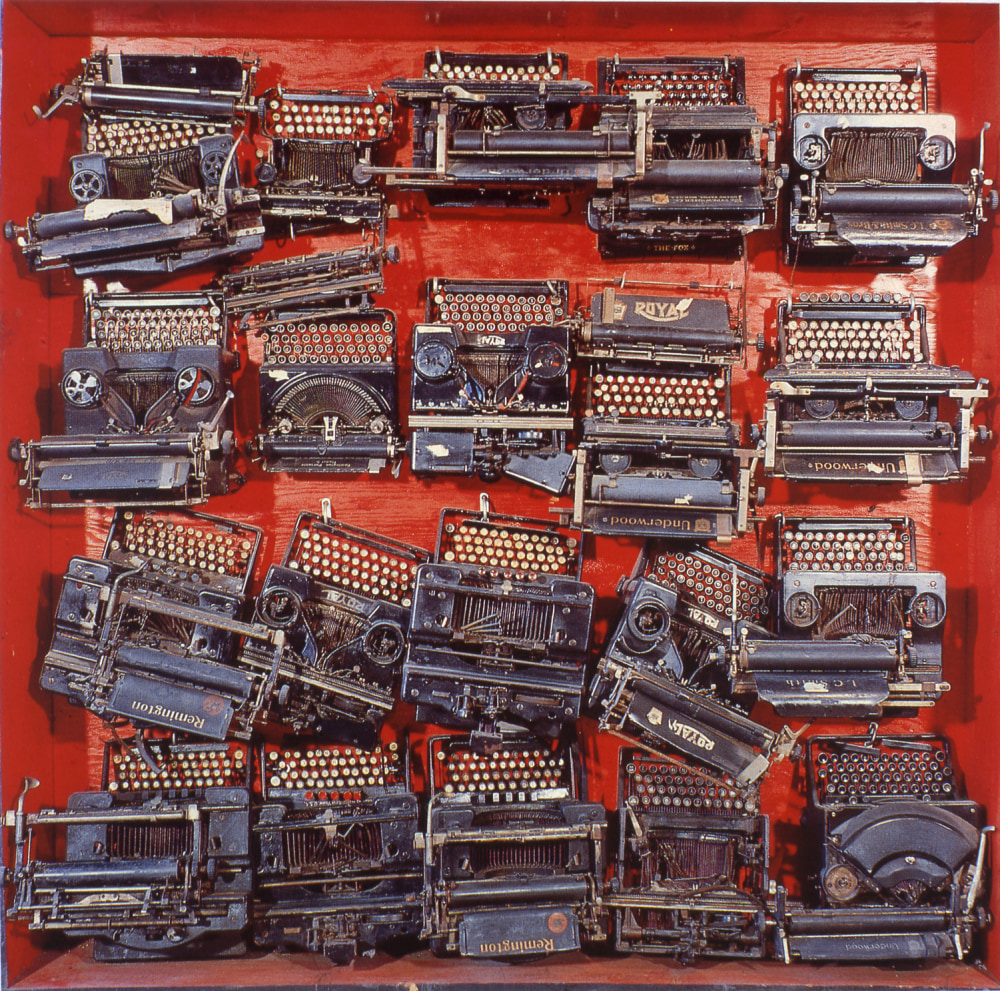
Arman working, 1982
Ever since his childhood, until he left art school, Arman never ceased to draw or make sketches. All his future word is already prepared. Like with the old masters, it is outlined and planned out with diagrams, schemes and graphic notes. Such preparation with drawings and texts allows the precision of each project to be understood. A clear approach to the whole work, and a theoretical reasoning, consistent to each piece, predetermined like a musical score “in progress”, leaves nothing to chance while the work is executed by Arman and his assistants. Like Picasso, there have been hundreds of notebooks and sketchpads. Arman’s ideas are not revealed by a theoretical body of declarations, but by a series of drawings. His aesthetics should be considered from the point of view of the systematic in which chance is calculated and controlled. In this way, a veritable set theory is constructed – a combination of his personal taste, his own family context and art of his time. Arman renovates and makes more profound the role of the object in our society, and today he offers a new reading of his work which is part of a general concern with the systematic. The Accumulations have such a breadth and power that it is clear Arman has invented a style and a vision that is among one of the greatest.

Infinity of Typewriters and Infinity of Monkeys and Infinity of Time = Hamlet, 1962
That which unites, that which separates: each of these terms, in turn, gives rise to a different reading in the history of art. The inscription of the atists therein is something else again: the group – that classical means of setting up beacon lights – is revealed to be a heterogeneous agglomerate born of circumstance, to which rejection and refusal alone have, the most often, lent meaning, an inspired mountebank repeating ceaselessly that what separates these artists from others evidently invites them is sometimes sufficient in the eyes of a good-natured public, dazzles by novelty, to justify its existence.
Thus Pierre Restany was the tireless artisan of the New Realist. A vague formula serving as a manifesto: “New Realism equals new perceptive approaches to the real” proved itself to be broad enough to collect under one banner the diverse approaches of Yves Klein and Raymond Hains, those of Tinguely, Christo, Raysse and Spoerri, as well as those of César and of Arman. The accent placed by Pierre Restany upon the non-pictorial materials, the predominance of the object, the relationship with Dada and the parallelism with Pop Art, then in its infancy, tended to underscore the singularity of these artists in an age almost entirely given over to informal art and post-cubist abstraction.
Of these artists outside the norms, Arman then seemed to be a sort of robot-portrait. Even more than the iron-mongering of Tinguely (who is linked by some to the tradition of metallic sculpture inaugurated by Gonzales) or the posters of Raymond Hains, assimilated for their part and by mistake, with an avatar of the collage, Arman’s garbage cans seemed, beyond any possible recovery, the very negation of pictorial matter.